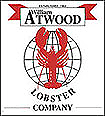
Report sees another decade of food price inflation
Futures moves reflect link between grains, crude oil
By Matt Andrejczak & Laura Mandaro, MarketWatch
SAN
FRANCISCO (MarketWatch) -- While global prices for food crops
and agricultural commodities should ease from recent peaks,
prices over the next decade will hover well above the prior
10-year average, a report released Thursday said.
The outlook, issued by the
Organization for Economic Co-operation and Development and the
Food and Agriculture Organization of the United Nations, said
global prices through 2017 will surge the most for vegetable
oils due to demand for biofuels and food.
Prices for vegetable oil
could rise as much as 80% in inflation-adjusted terms, easily
outflanking a projected 20% increase for meat prices and 40%
- 60% higher grain prices.
Biofuel demand "is
the largest source of new demand in decades and a strong factor
underpinning the upward shift in agricultural commodity prices,"
read the report.
Crude oil hits 'petrograins'
Thursday's actions in the futures pits underscored the link
between fuel and agricultural prices.
Corn, soybean and soybean oil prices all dropped sharply, weighed
down by a reversal in crude oil prices and dragging other soft
commodities lower.
"Crude oil has set
the tone for a lot of commodities," said Don Roose, president
of U.S. Commodities, Inc. in West Des Moines, Iowa. These two
commodities can be classified as "petrograins," he
noted, because they are both used for food and to make petroleum
substitutes ethanol and biodiesel.
"We had some bullish
and bearish news but crude oil overshadowed it," he said.
Crude oil for July delivery
fell $4.41, or 3.4%, to close at $126.62 a barrel, its lowest
closing level since May 16. See Futures Movers.
The July corn contract lost
10 cents, or 1.8%, to settle at $5.82 a bushel. July soybeans
lost 50 cents, or 3.6%, to close at $13.23 a bushel. Soybean
oil for July delivery retreated 3.8% to settle at 60.30 cents
per pound. Wheat lost 16 cents, or 2%, to close at $7.43 per
bushel.
Beef to butter, prices on rise
Increased demand for biofuels
isn't the only culprit, the OECD said. Echoing the U.S. Agricultural
Department, the group of 30 industrialized nations said low
stock supplies of key grains, droughts in Australia, and rising
middle-class economies in China and India have also led to the
recent surge in food prices around the world.
Compared to averages for
1998 through 2007, the report forecast that prices, adjusted
for inflation, are projected to be:
· 20% higher for
beef and pork;
· 30% higher for
raw and white sugar;
· 40-60% higher for
wheat, maize and skim milk powder;
· 60% higher for
butter and oilseeds;
· 80% higher for
vegetable oils (driven by food and bio-fuels demands).
The OECD plans to use its
report to stir government officials worldwide to improve food-purchasing
power in low-income countries, which have been hit the hardest
by rising food prices. In emerging economies, higher prices
for rice, wheat, corn and soybeans have reportedly sparked food
riots and led some countries to restrict exports certain grains.
The OECD, which will present
its findings at separate meetings with world leaders in Paris
and Rome next week, said consumption and production is growing
faster in developing countries for all agricultural commodities,
except wheat.
_Matt Andrejczak is a reporter
for MarketWatch in San Francisco._Laura Mandaro is a reporter
for MarketWatch in San Francisco.














